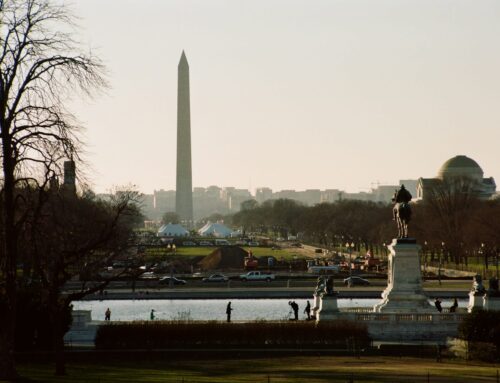Real estate prices boomed in the 1990s and continue to grow in many areas of the country despite the recession. Even though millions of individuals and corporations are making big money on their holdings, federal agencies like the Bureau of Land Management (BLM) and the U.S. Forest Service still seem intent on giving away the farm.
Because of inaccurate or outdated land appraisals, and the failure to adjust related user fees, these agencies are failing to collect millions of dollars in revenue. Over the last few years, BLM and the Forest Service have taken a lot of well-deserved heat, particularly in two critical General Accounting Office (GAO) reports, for their practices related to the leasing, selling and exchanging of federal land. Contrary to the requirement of federal law, these agencies aren't charging fair market value for the land and resources under their purview.
One prime example involves the Chapel of the Holy Cross in the Coconino National Forest. The Diocese of Phoenix has been leasing 11 acres for the chapel through a Special Use Permit at a rate of $775.50 per year. This price, however, has not changed since the 1970s despite periodic letters announcing that a reappraisal would take place and the rate would climb. According to the Forest Service's own user fee guideline of five percent of fair market value, which is now estimated at $5 million for the 11 acres, the diocese should be paying $250,000 per year. This equates to a taxpayer loss of about $1 million every four years.
Another more systematic problem with Forest Service user fees involves those paid by owners of cabins in national forests. Many of these cabins are second homes, and owners pay five percent of the fair market value of the property to “rent” the land where their cabin is located. Although private property values adjacent to many national forests have skyrocketed, many of the plots are still valued at decades-old appraisals.
Congress passed legislation to fix this problem in 2000, but the Forest Service has yet to figure out the procedure for setting cabin user fees. Their current plan is to cap increases in cabin user fees at five percent per year. With some properties due for increases of up to 300 percent, it could take 23 years for them to reach the current fair market value. And by that time the property values will likely have gone up another 300 percent! If adopted, the Forest Service is likely to prevent taxpayers from ever getting compensated fairly for public land use.
And the waste doesn't end with user fees. When BLM sells land directly to a pre-identified buyer, taxpayers habitually get the short end of the stick. According to a General Accounting Office (GAO) report, BLM's appraisals often underestimate the fair market value of land by neglecting to take into consideration how the buyer plans to use it. In addition, they are conducting direct sales of land that would be better suited to a sale process that's open to competition – and would likely earn taxpayers closer to full market value in exchange for a publicly owned resource. Between 1991 and 2000, the 24,000 acres of land that BLM sold competitively received about 18 percent more ($6 million) than the appraisals suggested. If the same pattern of underestimation existed for the 31,000 acres sold without competition, it's likely that more than $6 million was lost.
The Forest Service and BLM have an obligation to manage their land well, but they also have a responsibility-particularly in these times of deepening deficits-to represent the best interests of American taxpayers. Instead, they're making sweetheart deals that make the purchase of Manhattan Island look like a rip off in comparison.











Get Social